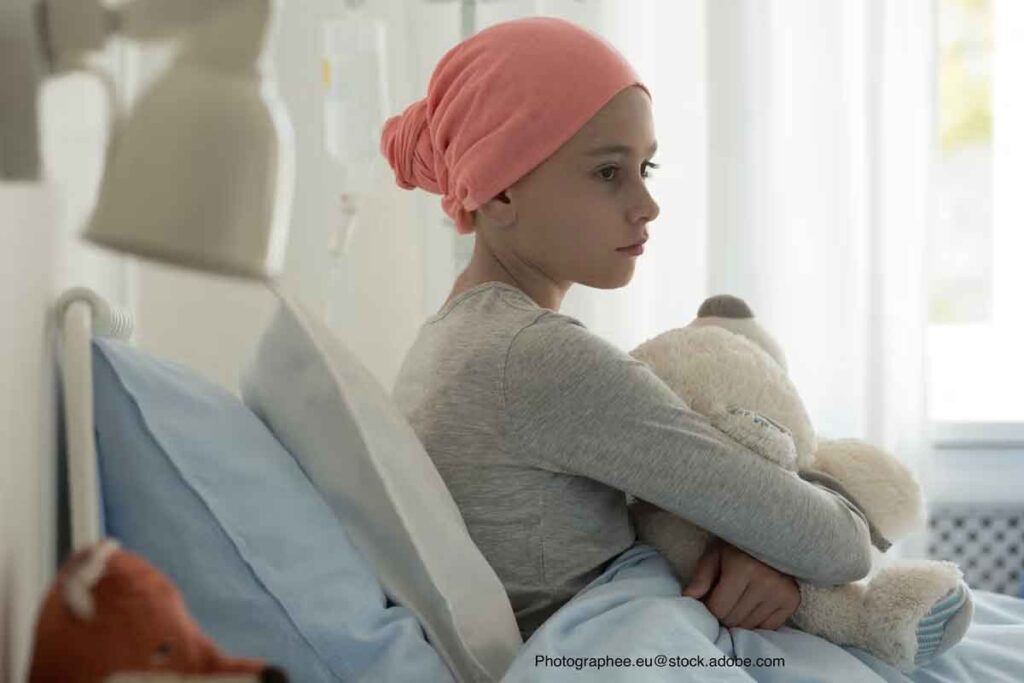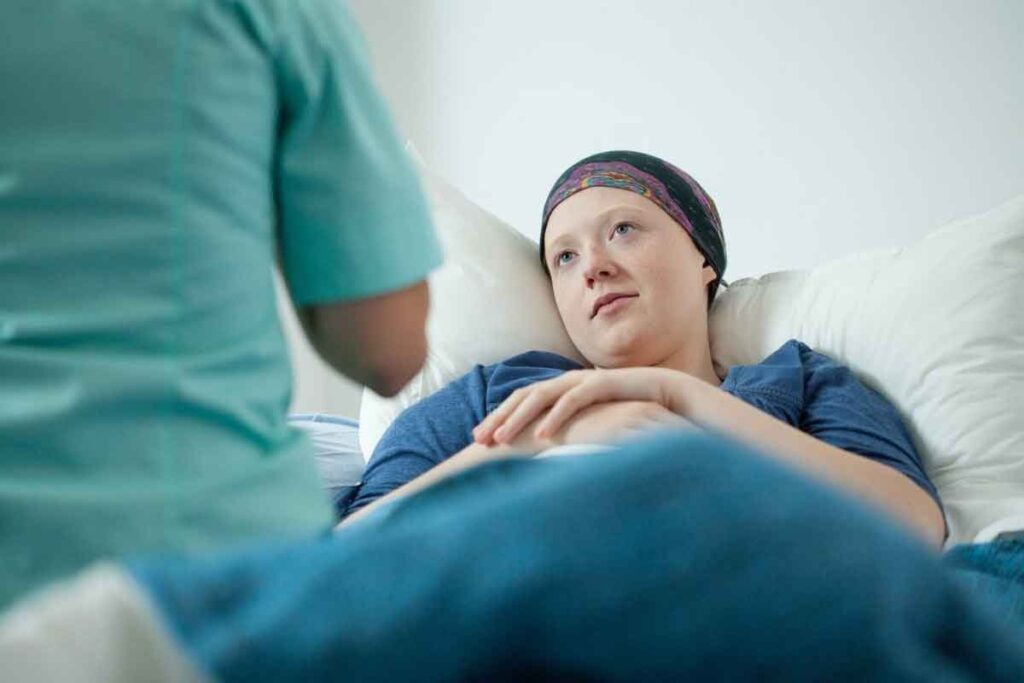
The diagnosis of Acute Lymphoblastic Leukemia (ALL) in children has seen a big change in treatment outcomes. Recent data show that the acute lymphoblastic leukemia child survival rate for five years in developed countries is over 85-90%. This improvement comes from better medical research and treatment methods.
The National Cancer Institute says that between 1975 and 2020, childhood cancer death rates fell by more than 50%. This drop shows how far we’ve come in treating childhood cancers, like ALL. Early diagnosis, targeted treatments, and care from specialized hospitals play big roles in these better survival rates.

To understand childhood ALL, we must look at its medical details. This includes how common it is, its symptoms, and how doctors diagnose it. Acute Lymphoblastic Leukemia is a cancer that affects the blood and bone marrow. It’s marked by the fast growth of immature white blood cells.
ALL is the top cancer in kids, making up about 25% of cancers in children under 15. It’s a big worry in pediatric oncology, hitting its peak between 2 and 5 years old.
Prevalence of ALL in Children
| Age Group | Incidence Rate |
| 0-4 years | Higher incidence |
| 5-9 years | Moderate incidence |
| 10-14 years | Lower incidence |
ALL symptoms can be tricky to spot early because they’re similar to other common childhood illnesses. Kids might feel tired, look pale, get sick often, and bruise easily.
Doctors use a few steps to diagnose ALL. They do a physical check-up, lab tests (like a complete blood count and bone marrow aspiration), and imaging studies. A bone marrow cell check confirms the diagnosis.
Early detection and accurate diagnosis are key to effective treatment and better survival chances in children with ALL.

Long ago, the outlook for kids with ALL was very bad. But, in recent years, new treatments have made a big difference. Now, more kids are surviving thanks to these advances.
Treatment for ALL in kids has changed a lot, leading to better survival rates. From 1975 to 2020, deaths from childhood cancer dropped by over 50%. The 5-year survival rate for ALL went from 60% to about 90% for kids under 15.
| Year | 5-Year Survival Rate |
| 1975 | 60% |
| 2020 | 90% |
Several important discoveries have helped more kids with ALL survive. These include:
These breakthroughs have all played a part in making ALL one of the most treatable childhood cancers.
Today, kids with ALL have an 85-90% chance of survival in developed countries. This big jump is thanks to better treatments and understanding the disease.
In developed countries, the five-year survival rate for kids with ALL has gone up a lot. The all leukemia survival rate has seen a big improvement. This is due to better treatment plans and care for patients.
The survival rate for pre b cell acute lymphoblastic leukemia has also gotten better. New targeted therapies and better support care have helped a lot.
| Country | Five-Year Survival Rate |
| United States | 87% |
| Canada | 88% |
| United Kingdom | 86% |
ALL has one of the highest survival rates among childhood cancers. The all cancer survival rate for kids has been going up, with ALL leading the way.
Looking at survival rates for different childhood cancers shows progress in treating pre b all acute lymphoblastic leukemia. While there’s more work to do, the trends are looking good.
Children with Acute Lymphoblastic Leukemia (ALL) face different survival chances. Knowing what affects these chances is key to better treatment and higher survival rates.
How old a child is when they get ALL matters a lot. Kids aged 1 to 4 usually do better than those under 1 or older.
Age-specific survival rates show big differences. Younger kids often have better chances because of how their leukemia acts and how well they respond to treatment.
The type of ALL also plays a big role. B-cell ALL and T-cell ALL have different traits and treatment responses.
| ALL Subtype | Frequency | Five-Year Survival Rate |
| B-cell ALL | 80-85% | 90% |
| T-cell ALL | 15-20% | 80-85% |
How well a child responds to treatment early on is a big clue to their future. Those who quickly get complete remission have a better outlook.
Keeping an eye on how treatment goes helps doctors make changes. This can lead to better results for the child.
The outlook for kids with B-Cell ALL has greatly improved. This is thanks to new research and treatments. B-Cell ALL, which involves B cells, has seen big steps forward in treatment, boosting survival chances.
Kids with standard risk B-Cell ALL have a good chance of recovery. Current treatment protocols have greatly raised the five-year survival rates. Most kids with this type can go into long-term remission with the right treatment.
But, kids who relapse face a tougher road. Yet, recent data show a five-year survival rate of about 52% after relapse. This highlights the need for effective second-line treatments and the chance for recovery after relapse.
Survivors of B-Cell ALL often have a bright future. Many live well into adulthood after beating the disease. Long-term follow-up care is key to catching and treating any late effects of treatment early.
| Survival Metric | Standard Risk B-Cell ALL | Post-Relapse B-Cell ALL |
| Five-Year Survival Rate | 85-90% | 52% |
| Long-term Remission | High likelihood | Variable |
| Late Effects Monitoring | Essential for long-term survivors | Critical for post-relapse survivors |
T-Cell and Pre-B Cell ALL are two types of Acute Lymphoblastic Leukemia. They face different survival challenges and have their own advantages. Knowing these differences is key to creating effective treatments.
T-Cell ALL is harder to treat than Pre-B Cell ALL. This is because of higher white blood cell counts and a higher chance of the disease spreading to the brain. Patients with T-Cell ALL often need more aggressive treatments.
Key challenges in T-Cell ALL include:
Pre-B Cell ALL has seen big improvements in treatment thanks to tailored pediatric care. These personalized treatments have led to better survival rates. This makes Pre-B Cell ALL a success story in fighting childhood cancer.
“The introduction of risk-adapted therapy has revolutionized the treatment of Pre-B Cell ALL, allowing for more precise and effective care.” -A Pediatric Oncologist
The advantages of Pre-B Cell ALL treatment include:
Developing treatments that fit each patient’s needs has greatly improved survival rates for both T-Cell and Pre-B Cell ALL. Tailored treatments based on the patient’s subtype and risk factors help increase survival chances and lower relapse risk.
Key elements of tailored protocols include:
Age is key in fighting ALL in kids, with different hurdles at each stage. Survival rates for Acute Lymphoblastic Leukemia change with age. Knowing these differences helps doctors create better treatment plans.
Infants under 1 year have a tough time because their immune system is not ready. The prognosis for infants with ALL is not as good as for older kids. This is because their leukemia is often more aggressive.
Treatment for these young ones is very intense. It aims to tackle leukemia’s specific genetic traits.
Kids aged 1 to 4 have a better outlook. They often have a high cure rate for childhood leukemia. Five-year survival rates are over 90% in some cases.
This good news comes from fewer high-risk genetic traits and better responses to chemotherapy.
Older kids and teens with ALL have their own set of challenges. Their disease might be harder to treat, and intensive therapy can affect their growing bodies. Adolescents and young adults might face a slightly worse prognosis.
But, thanks to research and targeted therapies, their outcomes are getting better.
In summary, knowing how age affects survival rates in ALL is vital. It helps doctors tailor treatments for each age group. This way, they can improve care and results for kids with ALL.
Relapse is a big challenge in treating Acute Lymphoblastic Leukemia (ALL) in kids. It lowers the chances of a full cure. When leukemia comes back, it makes treatment harder and can hurt long-term survival chances.
The time when relapse happens matters a lot for survival. Early relapse happens soon after treatment starts and has worse outcomes. Kids with early relapse face lower survival rates because their disease is more aggressive.
When leukemia comes back, doctors use second-line treatments to try and get it under control again. How well these treatments work depends on when the relapse happens and the first treatment plan. Targeted therapies and immunotherapies are showing promise in helping relapsed patients.
Keeping a close eye on patients long-term is key to catching relapse early and managing treatment side effects. Regular check-ups include watching for signs of relapse, handling treatment side effects, and improving quality of life.
| Relapse Timing | Survival Outcome | Treatment Approach |
| Early Relapse | Poorer Outcomes | Aggressive Second-Line Treatments |
| Late Relapse | Better Outcomes | Targeted Therapies and Immunotherapies |
The field of pediatric ALL treatment is changing fast. New methods are being developed to help more kids survive. These changes come from a better understanding of the disease and more tailored treatments.
Risk-adapted therapy is a big step forward in treating pediatric ALL. It means treatment plans are adjusted based on how likely a patient is to do well. This depends on the leukemia’s genetics, the patient’s age, and how they first respond to treatment.
Risk stratification helps doctors give the right amount of treatment. It means patients at higher risk get more intense therapy. This helps those at higher risk without hurting the good survival rates of those at standard risk.
Adding targeted therapies and immunotherapies is another big leap. Targeted therapies attack specific weaknesses in leukemia cells. Immunotherapies, like CAR-T cell therapy, use the immune system to fight cancer.
Pediatric ALL treatment plans are very different from adult ones. This is because childhood ALL has its own unique biology. Pediatric treatments aim to cure more kids while avoiding long-term side effects.
| Treatment Aspect | Pediatric Protocols | Adult Protocols |
| Treatment Intensity | Tailored to risk category, with an emphasis on minimizing long-term effects | Often more intensive, with less emphasis on long-term survivorship issues |
| Use of Immunotherapy | Increasingly incorporated, with a focus on CAR-T cell therapy for relapsed/refractory cases | Also using immunotherapy, but with different agents and in different contexts |
| Supportive Care | Comprehensive, including psychological support and long-term follow-up | Generally focused on managing treatment side effects |
The difference between pediatric and adult treatments shows how important age-specific care is. As we learn more about leukemia at different ages, treatments will keep getting better. This will help more kids with ALL survive.
Specialized treatment centers around the world are leading the way in treating Acute Lymphoblastic Leukemia (ALL) in kids. These centers have the latest technology and teams of experts. They work hard to give kids the best care possible.
Comprehensive cancer centers are key in fighting childhood ALL. They offer everything from diagnosis to supportive care in one place. These centers also lead in research and clinical trials, giving kids access to new treatments.
Liv Hospital is a top example of how to treat ALL. They focus on high-quality care using the latest research and personalized plans. Their team uses advanced treatments like targeted therapy and immunotherapy to help kids survive.
Even with better treatments, getting care is hard for many kids worldwide. In poorer countries, kids often can’t get the treatment they need. This makes it harder to cure childhood leukemia. Efforts to help include training doctors and improving healthcare in these areas.
In summary, specialized centers are key in fighting childhood ALL. But we must work harder to make sure all kids can get the care they need.
Research and new treatments are making a big difference in fighting childhood leukemia. Doctors and scientists are finding new ways to battle this tough disease together.
Thanks to these efforts, kids with leukemia are living longer. In places with good healthcare, up to 90% of kids survive for five years. This shows how well modern treatments work and how hard doctors are working.
Looking ahead, we expect even better news for kids with leukemia. Studies on new treatments and ways to boost the immune system are showing great promise. Places like Liv Hospital are leading the way, giving kids with ALL the best care.
The outlook for ALL treatment is bright. With more research and better treatments, we can help even more kids beat this disease. It’s important to keep working hard to make life better for kids with leukemia.
Children with ALL have a survival rate of about 85-90% in developed countries. This shows a big improvement in treatment results over the years.
The age at diagnosis is very important. Kids aged 1-4 usually have the best chance of recovery. Infants under 1 face special challenges. Older kids and teens have different survival rates too.
B-Cell ALL has a better outlook than T-Cell ALL. B-Cell ALL with standard risk has very good results. T-Cell ALL is harder to treat, but new treatments are helping both types.
Relapse makes it harder to cure ALL. Early relapse is worse than late relapse. There are treatments for a second relapse, but they work differently for everyone. This shows why long-term follow-up is key.
New treatments like risk-adapted therapy and immunotherapy are improving survival. Pediatric treatments are different from adult ones, helping kids more.
Centers like Liv Hospital offer specialized care and follow international standards. They provide advanced treatments, improving survival chances. But not everyone has access to these centers, creating challenges.
Survivors of B-Cell ALL usually have a good long-term outlook. They need ongoing care. The initial treatment response and any late effects from treatment can affect their long-term health.
Yes, pre-B Cell ALL gets special treatment plans. These plans are tailored to leukemia’s specific traits, aiming for better results.
Infants under 1 face unique challenges. Their leukemia biology is different, and they are at higher risk for treatment side effects. They need special treatment approaches.
Have questions or need assistance? Our team is here to help you with appointments, services, or general inquiries.